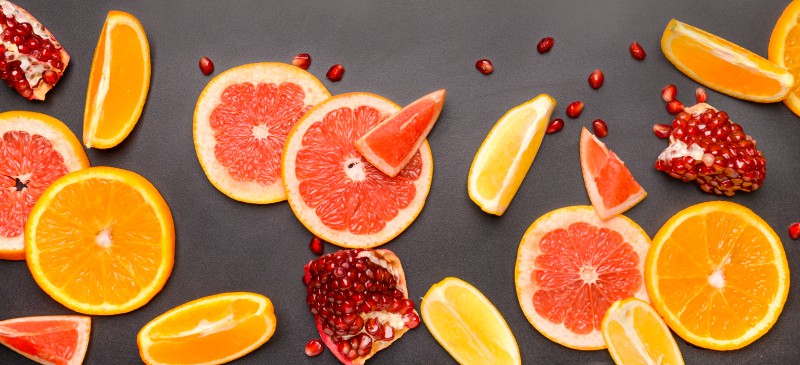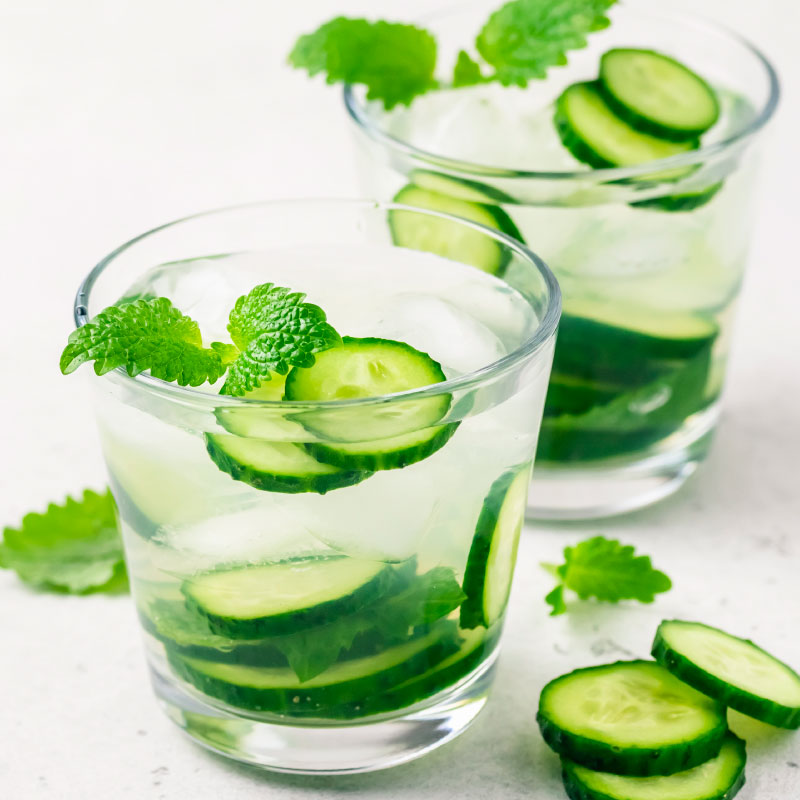This Dr. Axe content is medically reviewed or fact checked to ensure factually accurate information.
With strict editorial sourcing guidelines, we only link to academic research institutions, reputable media sites and, when research is available, medically peer-reviewed studies. Note that the numbers in parentheses (1, 2, etc.) are clickable links to these studies.
The information in our articles is NOT intended to replace a one-on-one relationship with a qualified health care professional and is not intended as medical advice.
This article is based on scientific evidence, written by experts and fact checked by our trained editorial staff. Note that the numbers in parentheses (1, 2, etc.) are clickable links to medically peer-reviewed studies.
Our team includes licensed nutritionists and dietitians, certified health education specialists, as well as certified strength and conditioning specialists, personal trainers and corrective exercise specialists. Our team aims to be not only thorough with its research, but also objective and unbiased.
The information in our articles is NOT intended to replace a one-on-one relationship with a qualified health care professional and is not intended as medical advice.
Top 12 Winter Fruits for Health (Plus How to Add Them to Your Diet)
December 7, 2024

Eating seasonally may feel a bit tougher to pull off in the winter — however, the benefits of this approach by eating winter fruits and vegetables are still the same, including a higher intake of certain nutrients, help supporting local farmers, plus better taste and value.
While farmers markets open in the spring, summer and fall tend to draw in the largest crowds, those that remain open during the coldest months of the year still have plenty to offer.
Which fruits grow in winter? Winter fruits in season include those in the citrus fruit family, like oranges and grapefruit, as well as kiwi and winter melon. Those aren’t all either.
By emphasizing cold-weather produce in your diet, you’ll obtain important nutrients that support your immune system and more, such as vitamin C, fiber and magnesium.
Top 12 winter fruits
The availability of winter fruits in different regions depends on the specific temperature, as well as the use of farming methods, such as greenhouses and hoop houses that help crops grow in cooler climates.
In tropical regions, such as those located close to the equator, it’s possible to grow many fruits year-round, such as bananas, coconut and avocado. But in much of North America, the range of fruits available in the dead of winter is a bit more limited.
What are examples of winter fruits? Here are the top winter fruits to add your diet:
1. Oranges
There are many types of oranges in existence, including cara cara, navel, mandarin, minneola, blood oranges and others. Some types are available year-round, but in the U.S., oranges are in peak season during the winter, when they grow abundantly in states such as Florida, California, Texas and Arizona.
They’re more well-known for providing lots of vitamin C, but oranges are also rich in flavonoids, such as hesperidin.
2. Clementines
Clementines are basically small oranges. They are technically types of mandarin oranges that are made from crossing two different orange species.
In stores they’re sometimes called “halos” or “cuties” and tend to be sold in big boxes or bags. They’re popular among children since they’re easy to peel and often seedless, and they’re a great way to obtain vitamin C.
3. Tangerines
Tangerines are types of sweet oranges that tend to be smaller than bigger types, such as cara caras and navels. Like other oranges, they provide vitamin C and a host of other nutrients.
4. Grapefruits
Much like other citrus fruits, grapefruits grow in the U.S. predominately in California, Texas, Florida and Arizona. They are in season usually from January to the late spring.
Grapefruit is high in vitamin C plus vitamin A, as well as health-promoting phytochemicals like lycopene and beta-carotene, limonoids like limonin, and flavonoids like naringenin. These have the ability to fight free radical damage and oxidative stress that contribute to aging and chronic disease development.
5. Kumquat
Kumquats are tiny citrus fruits that have a sweet and tart flavor. Hailing from the same family of plants as the orange, kumquats are one of the best sources of vitamin C and fiber.
Unlike other citrus fruits, kumquats can be consumed with the skin on. Although the pulp has a distinctly sour flavor, the skin actually provides an extra dose of sweetness and is full of protective compounds.
6–7. Lemons and limes
While you can find lemons and limes in grocery stores all year, certain types, such as Meyer lemons, are in season in the middle of winter. Meyer lemons are described as sweeter than regular lemons and are often used in baking and cocktails.
There are many reasons to enjoy lemons and limes. For instance, they’re full of acidic flavor but low in calories and generally low in sugar.
They also provide powerful flavonoids, including quercetin, luteolin, apigenin and hesperidin.
8. Kiwi
Kiwi is a small, fuzzy fruit with a seedy, green inside that is harvested in winter through spring. It’s exceptionally high in vitamin C — plus it provides a good amount of vitamin K in addition to potassium and vitamin E.
9. Winter melon
Winter melon, also called ash gourd, is an excellent source of antioxidants, dietary fiber and vitamin C. This melon has a dark green color and an oblong shape.
The flesh of the fruit is white, as are the seeds, but unlike most fruits, it cannot be consumed raw. Instead, it’s typically simmered or steamed and treated more like a vegetable than a fruit in Asian and Indian recipes.
10. Pomegranates
Pomegranate is a red, sweet and sour fruit that is filled with many small seeds. The seeds contain tons of antioxidants, as does pomegranate juice, including flavonoids that are linked to cancer prevention, detoxification, heart health and more.
This fruit is also high in vitamin K, vitamin C, folate and potassium.
11. Cranberries
Cranberries are red winter berries that are high in antioxidants and nutrients associated with prevention of some cancers, infections, markers of heart diseases and inflammation. These include compounds such as anthocyanins, quercetin, benzoic acid and epicatechins.
Additionally, cranberries provide vitamin C, manganese, vitamin E and vitamin K.
12. Persimmon
Persimmon is a round, orange fruit native to Asia that’s high in vitamin A, vitamin C and manganese. It also contains antioxidants, such as gallic acid and epicatechin gallate, two compounds that are associated with health perks such as reducing cholesterol levels, inflammation and high blood pressure.
According to the U.S. Department of Agriculture, depending on your location, other fruits available in the winter can include:
- Apples
- Pears
- Pineapple
- Bananas
- Papaya
- Passion fruit
- Coconut
- Avocados
- Currants
- Pomelo
- Winter squash
- Dates
- Mosambi
- Indian jujube
- Strawberries
Health benefits
Adding winter fruits, such as oranges, cranberries, pomegranate and kiwi, to your diet is a great way to boost your vitamin C and antioxidant intake. Here’re more about the benefits of eating winter fruits:
- High in vitamin C — This essential nutrient and antioxidant helps support immunity, provides cancer-fighting properties, and improves brain, skin and heart health.
- Good sources of vitamin A — Vitamin A is another antioxidant that is tied to eye/vision health, cardiovascular health and skin health.
- Provide fiber — Dietary fiber found in fruit is needed for digestive and gut health. Fiber helps prevent constipation, keeps your appetite in check, supports healthy cholesterol levels and “feeds” friendly probiotic microbes living in your gut microbiome.
- Support healthy cognitive function— Antioxidants such as flavonoids and polyphenols found in fruits have been shown to boost brain function and decrease cognitive decline.
- Can help support cardiovascular health — Fruits such as grapefruit and pomegranate can help keep cholesterol levels within a healthy range and decrease levels of systolic blood pressure, which may help protect against heart disease and stroke.
- May help fight cancer — Citrus fruits, kiwi and others are jam-packed with beneficial compounds that fight oxidative stress to protect against cell damage. Antioxidants are thought to play a central role in health and disease, with some research showing that they could aid in the prevention of many chronic conditions, including cancer.
- Protect bones — Some fruits provide minerals that help fortify your bones, such as potassium and vitamin C.
- Protect against kidney stones — Some fruits can help increase levels of citrate in the urine to prevent the formation of kidney stones.
- May help with weight loss — Winter fruits have a high water content and are low in calories yet brimming with fiber, making them a great choice if you’re looking to fill up on less calories.
- Help heal injuries faster and reduce joint pain — Cranberries, pomegranate and other fruits have anti-inflammatory and antioxidant effects that support healing of connective tissues.
- Reduce the risk of infections — Antioxidants and antimicrobial compounds found in winter fruits can help kill bad bacteria and naturally help treat urinary tract infections, bladder infections and even acne.
How to add to diet
Winter fruits can be enjoyed in many ways, such as by simply peeling and eating them as a snack, juicing them, adding them to fruit salads, or sectioning them and enjoying with some yogurt or cottage cheese and granola.
If you find citrus fruits like grapefruit to be a bit too sour, try topping with a small amount of raw honey.
Other uses for citrus fruits, including grapefruit, blood oranges, lemons and limes, include adding them to mocktails or low-sugar cocktails, marmalades, and healthy desserts, like key lime pie, orange cake or lemon muffins.
Lemon and lime juice also help zest up the flavor of salad dressings, marinades, fresh pressed juices, smoothies and more.
Cranberries are a great addition to poultry, meat or fish, along with sauces and jams. Pomegranate seeds have a healthy snack, are great on oatmeal or with yogurt, and can be juiced to make a healing beverage.
Here are recipe ideas using some of the winter fruits listed above:
- Cranberry Apple Cider
- Strawberry Kiwi Smoothie
- Chia Spiced Chia Seed Pudding with Pomegranate Seeds
- Orange Tahini Dressing
- Healthy Key Lime Pie
- Secret Detox Drink
- Beet and Pomegranate Salad Recipe
- Orange Carrot Ginger Juice
Keep in mind that aside from winter fruits, you’ll also benefit from consuming winter vegetables, such as:
Risks and side effects
Although fruits are associated with a long list of benefits, it’s important to remember that fruits also contain a high amount of sugar and not much protein or healthy fats, so eating them as part of a balanced diet is best.
Compared to whole fruit, fruit juice is also significantly higher in calories, which can contribute to weight gain. Therefore, it’s best to opt for whole fruit over fruit juice whenever possible.
Citrus fruits also contain a much higher amount of citric acid than non-citrus fruit, which can erode tooth enamel over time and increase the risk of developing cavities. For this reason, it’s important to keep your intake in moderation and enjoy a variety of other fruits.
Certain types of fruit may also interact with medications. Specifically, grapefruit, tangelos and Seville oranges contain a chemical known as furanocoumarin, which can block the activity of a specific enzyme needed to break down some medications, such as statins and benzodiazepines.
If you take any prescription medications, be sure to talk to a trusted healthcare professional before consuming new fruits to prevent interactions.
Additionally, keep in mind that kiwi allergies are somewhat common and responsible for 10 percent of all food allergy reactions in children. People with allergies to latex and other fruits like avocados and bananas should be especially cautious.
Conclusion
- Are any fruits in season in winter? Yes — these include citrus fruits like oranges, lemons, limes, grapefruit and tangerines, plus kiwi, pomegranate, winter melon and cranberries.
- Studies show that these fruits may help improve digestive health, boost brain function, increase weight loss, combat cancer cell growth, prevent kidney stones and enhance heart health.
- While some fruits can be juiced, whole fruits should be prioritized over fruit juice, as juices are generally higher in calories and sugar but lower in fiber.
- Besides enjoying fruits as a simple snack, try adding these fruits to healthy desserts, oats, yogurt bowls, salads, side dishes and smoothies, just like you would with summer fruits.














